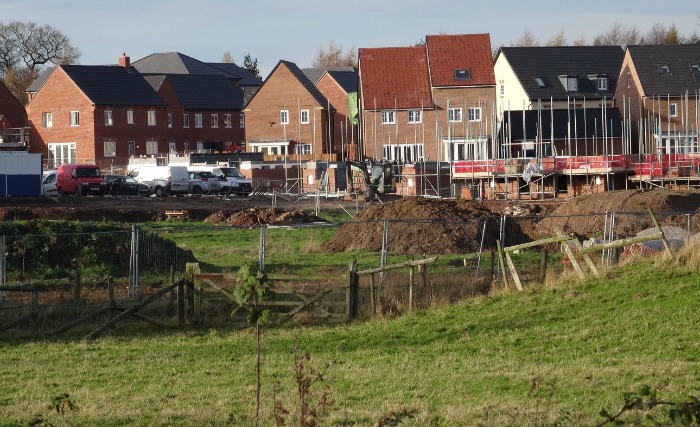
Campaigners are urging developers to build on brownfield sites first as thousands of homes are set for Cheshire East’s greenbelt, writes Stephen Topping.
The Campaign to Protect Rural England (CPRE) has identified plans to build 4,747 homes on greenbelt land across the borough.
But it insists there are enough brownfield sites for at least 2,532 homes to be built on first – and it has called on Cheshire East Council to push through development on these sites before allowing housebuilding on greenbelt land.
Tom Fyans, director of campaigns and policy at CPRE, says greenbelt land is being “eroded at an alarming rate” across the country.
“The Government is failing in its commitment to protect the greenbelt,” he said.
“It is essential, if the greenbelt is to fulfil its main purposes and provide 30 million of us with access to the benefits of the countryside, that the redevelopment of brownfield land is prioritised, and greenbelt protection strengthened.”
Three per cent of Cheshire East’s greenbelt was ‘rolled back’ by the council in its Local Plan, which was approved by inspectors last year.
Cllr Rachel Bailey, Conservative leader of Cheshire East Council, said in March: “If we hadn’t rolled back greenbelt to deliver a housing land supply, a far greater area than the three per cent would have been at risk of redevelopment.
“We need to have an eagle eye on delivering that housing land supply in protecting that greenbelt.”
Cllr Ainsley Arnold, Conservative cabinet member for housing, planning and regeneration, insists the council has no power to force developers to build on greenbelt sites.
“It is unfair to give the impression that the council is indifferent to the loss of greenbelt land for housing development.
“We want to protect the borough’s green open spaces and have a policy to promote brownfield sites wherever possible but the CPRE, who played an active part in the local plan strategy consultation process, is well aware that local authorities cannot compel developers to build on brown sites.”
In its ‘State of the Greenbelt’ report, CPRE claims that there are plans to build 4,747 homes on greenbelt land in Cheshire East – although the council says that figure is actually 4,650.

CEC says it needs to build 36,000 homes before 2030, with the national housebuilding demand standing at 300,000 homes a year.
“The borough does not have the volume of brown sites or greenfield sites required to meet that demand,” Cllr Arnold added.
“Therefore the council, through its local plan strategy, was faced with no option but to take some land out of greenbelt and this was approved by the government inspector and the secretary of state in approving the local plan.
“This leaves more than 98% of the borough’s greenbelt unchanged and unaffected by any of the plans proposals.”
Labour opponents are calling for the Local Plan to be revised in light of recent Government figures which suggest population growth will not be as high as previously thought.
Andy Burnham, the Labour mayor of Greater Manchester, announced last month his region’s local plan – called the Greater Manchester Spatial Framework – would be delayed to take into account the lower population figures.
But CEC insisted it had no plans to change.
A spokesman for the Ministry of Housing, Communities and Local Government said: “We are clear that building the homes our country needs does not mean tearing up our countryside.
“Last year the number of new homes built was the highest in a decade, and only 0.02 per cent of the greenbelt was developed for residential use.
“We are adding more certainty to the planning system and our new planning rulebook strengthens national protections for the greenbelt, and says that councils may only alter boundaries in exceptional circumstances once they have looked at all other options.”
(pic courtesy of Jonathan White)


















More houses just leads to an even bigger population over time, and more houses again, In 50 -100 years there will be no fields at all
So 100% less 3% is ‘more than 98% ‘. It doesn’t sound like it.